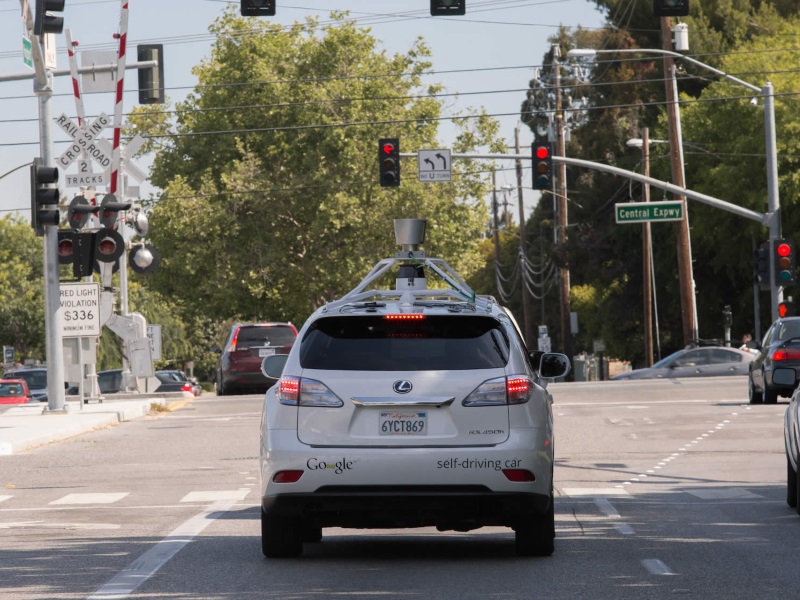- Home
- Others
- Others News
- Self Driving Car Technology Poses High Hacking Risk: Study
Self-Driving Car Technology Poses High Hacking Risk: Study

While major auto companies are working on introducing the futuristic self-driving technology in cars soon, this threatens to open new security problems for them as hackers have sensed an opportunity here, a researcher has predicted.
"We are a long way from securing the non-autonomous vehicles, let alone the autonomous ones," said Stefan Savage, computer science professor at the University of California-San Diago, in MIT Technology Review.
Pointing out security flaws to car companies which are into driverless car technology, the researcher said that extra computers, sensors and improved Internet connectivity required to make a car drive on its own increase the possible weak points.
Tech giant Google is working on autonomous cars as part of Google X project to develop technology for mainly electronic cars. The software installed in Google's cars is called Google Chauffeur.
Recently, with the help from Nasa space technology, automaker Nissan successfully test-drove its all-electric, driverless car at Nasa's Ames Research Centre in California.
Swedish automobile giant Volvo is also developing intelligent high bandwidth streaming capabilities in collaboration with Ericsson's cloud expertise and network to create a highway full of autonomous cars.
Tesla Motors, an American automotive and energy storage company, is also serious about self-driving car tech and hired processor design veteran Jim Keller to lead its autopilot hardware engineering team.
How does this technology work? The self-driving cars, or prototypes, rely on sensors to determine the surroundings and objects like pedestrians, cyclists and other vehicles around it.
The software assisting the sensors then decides the speed and trajectory to drive safely.
How is this technology a threat to security? Savage said that it is possible to take control of conventional vehicles in various ways, for example by dialling into a car's built-in cellular connection or by giving a driver a music CD that makes the car connect to an attacker's computer.
Once inside the system, the hackers can take control of the brakes, engine or other components of a person's car remotely.
The developers are still not able to isolate these "important" parts of the car because everything must be connected to enable many functions people expect of cars.
This is also owing to the fact that carmakers do not know exactly what software is inside the vehicles they sell because the third-party suppliers guard the details of the software inside, things like the brake-control system or central locking components.
For the latest tech news and reviews, follow Gadgets 360 on X, Facebook, WhatsApp, Threads and Google News. For the latest videos on gadgets and tech, subscribe to our YouTube channel. If you want to know everything about top influencers, follow our in-house Who'sThat360 on Instagram and YouTube.
Related Stories
- Samsung Galaxy Unpacked 2025
- ChatGPT
- Redmi Note 14 Pro+
- iPhone 16
- Apple Vision Pro
- Oneplus 12
- OnePlus Nord CE 3 Lite 5G
- iPhone 13
- Xiaomi 14 Pro
- Oppo Find N3
- Tecno Spark Go (2023)
- Realme V30
- Best Phones Under 25000
- Samsung Galaxy S24 Series
- Cryptocurrency
- iQoo 12
- Samsung Galaxy S24 Ultra
- Giottus
- Samsung Galaxy Z Flip 5
- Apple 'Scary Fast'
- Housefull 5
- GoPro Hero 12 Black Review
- Invincible Season 2
- JioGlass
- HD Ready TV
- Laptop Under 50000
- Smartwatch Under 10000
- Latest Mobile Phones
- Compare Phones
- Moto G15 Power
- Moto G15
- Realme 14x 5G
- Poco M7 Pro 5G
- Poco C75 5G
- Vivo Y300 (China)
- HMD Arc
- Lava Blaze Duo 5G
- Asus Zenbook S 14
- MacBook Pro 16-inch (M4 Max, 2024)
- Honor Pad V9
- Tecno Megapad 11
- Redmi Watch 5
- Huawei Watch Ultimate Design
- Sony 65 Inches Ultra HD (4K) LED Smart TV (KD-65X74L)
- TCL 55 Inches Ultra HD (4K) LED Smart TV (55C61B)
- Sony PlayStation 5 Pro
- Sony PlayStation 5 Slim Digital Edition
- Blue Star 1.5 Ton 3 Star Inverter Split AC (IC318DNUHC)
- Blue Star 1.5 Ton 3 Star Inverter Split AC (IA318VKU)

















